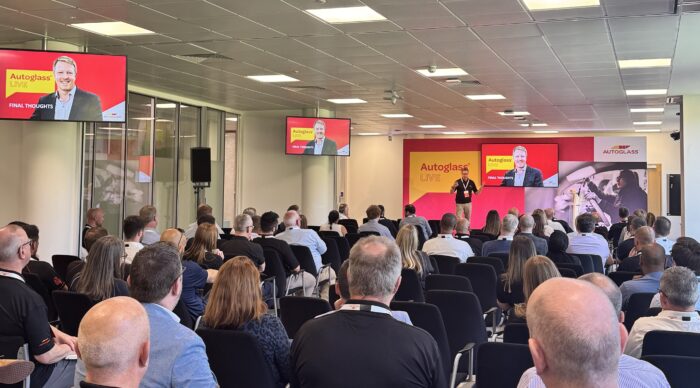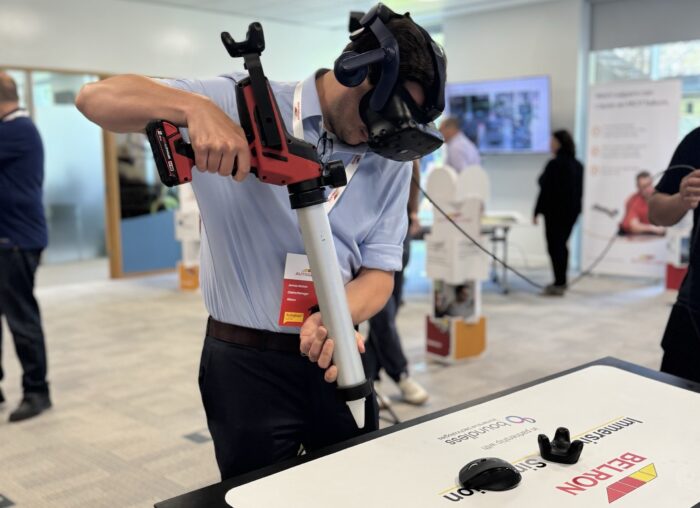Autoglass® Live 2025: Preparing the Insurance Industry for What’s Next in Motor Claims
With the rise of ADAS, digital-first customer behaviours, and changing regulation, the vehicle glass repair, replacement, and recalibration (VGRRR) landscape is shifting rapidly. At Autoglass® Live 2025, key partners from across the insurance and fleet, lease, trade and rental sectors came together to explore what these changes mean for claims processes, and how insurers can stay one step ahead.
The event focused on the major trends reshaping vehicle repair and claims services, framed around three key themes: resilience, responsibility, and reliability. For insurers, the message was clear: disruption is accelerating, and collaboration across the supply chain is key to delivering efficient, safe, and compliant customer journeys.

Resilience in a Changing World
Resilience is no longer just about operational stability; it’s about the ability to adapt at speed. For insurers, that means working with partners who can respond quickly and consistently to customer needs in a volatile landscape. Autoglass® is investing in exactly that agility, scaling technician capability, enhancing digital systems, and strengthening supply chain operations to reduce risk.
In the fleet and rental sectors especially, service continuity can have a direct financial impact. Vehicle downtime is costly, and even small delays in parts, appointments, or recalibration availability can significantly impact customer satisfaction and total claims cost. By building in flexibility anti-fragile supply chains, Autoglass® aims to support partners with fast, frictionless fulfilment – no matter the market conditions.
Digitising the Customer Experience
As claims journeys continue to evolve digitally, customer expectations are gradually shifting. While the traditional call-centre model still plays a critical role, there is a growing preference for self-service options, real-time updates, and more proactive communication. For insurers, the digital experience provided by supply chain partners can increasingly influence Net Promoter Scores and perceptions of brand trust.
Autoglass® is responding with a programme of digital enhancements designed to support seamless integration with insurer systems while improving end-customer experience. These include:
- Live appointment booking and tracking, allowing customers to manage their repair from any device.
- An upgraded CRM system, centred around the driver, vehicle, and claim, not just the repair job.
- Omni-channel communications, giving customers choice and consistency across phone, web, and mobile.
With over 70% of VGRRR journeys expected to start online by 2028, the shift toward intuitive, technology-enabled claims journeys is accelerating. The role of suppliers is not just to deliver repairs, but to protect the insurer’s customer relationship throughout the claim.

Supply Chain Readiness and AI-Driven Forecasting
With new vehicle models and manufacturers entering the market more frequently – particularly in the EV space – glass availability and recalibration readiness are critical.
Autoglass® is only working with key OEM-accredited glass manufacturers like FUYAO to secure early access to glass forfast-growing brands, including Chinese EVs. AI is already being deployed to forecast inventory requirements based on registration data, model trends, and claim volumes, helping to ensure stock is available when it’s needed, where it’s needed.
This approach supports first-time resolution, reduces cycle times, and enhances capacity planning during weather events or spikes in demand.
The ADAS Challenge: What Insurers Need to Know
One of the most critical changes facing motor insurers today is the growing complexity of ADAS systems and their impact on glass repair, replacement and recalibration claims.
Key trends highlighted at Autoglass® Live include:
- Sensor fusion is now standard: Many vehicles now require multi-sensor recalibration (camera, RADAR, LIDAR) after a single windscreen replacement. This increases repair time and complexity, making it vital that recalibration is correctly triaged at FNOL and factored into repair planning.
- Digital recalibration is essential: Tools like the Bosch DAS 3000 enable recalibration of vehicles with advanced digital platforms. Without this capability, incorrect or failed recalibrations can lead to safety risks and liability concerns.
- Self-recalibrating cameras are declining: Contrary to earlier predictions, OEMs are reverting to static or dual (static + dynamic) recalibration methods. This reflects the rising technical complexity and safety requirements of ADAS systems.
- ‘Repair opportunities are decreasing: Damage that falls within the vision area of ADAS cameras or sensors cannot be repaired. Instead, the glass must be replaced and the ADAS sensors recalibrated. For some models, such as those with inner roof mounted stereo cameras, this can reduce repair opportunities by as much as 30%.
These developments are already impacting repair ratios and the average cost per job. Accurate damage assessment and recalibration decision-making as well as comprehensive glass availability and ADAS coverage capability are now key to overall cost control and claims performance.
Regulation and Recalibration: What’s Coming
The European Commission’s upcoming Delegated Act, due in late 2025, is likely to reshape the regulatory landscape for vehicle data access and recalibration compliance. For insurers, this has far-reaching implications.
Industry discussions are already underway to explore whether proof of recalibration will be required during annual roadworthiness tests (like the MOT). If implemented, this would elevate the importance of digital calibration records and supplier traceability across the entire claims supply chain.
Autoglass® and Belron® are actively contributing to these regulatory conversations and preparing clients for what’s ahead. Ensuring compliance, without compromising customer service, will be a growing area of focus for insurers in the years to come.
Working Together for Better Outcomes
Autoglass® Live 2025 made one thing clear: the VGRRR landscape is changing fast, and motor insurers must stay ahead of the curve to manage cost, service, and compliance. Whether it’s the evolution of ADAS, the shift to digital customer journeys, or the emerging legislative environment, being prepared matters.
Insurers who work closely with proactive, data-driven supply chain partners can better anticipate change, streamline their claims processes, and deliver stronger customer outcomes. As recalibration becomes more central to safe vehicle repair, collaboration between insurers and specialists will be critical.
